Samsung unveils the Galaxy Express, a rehashed and unexciting 4G LTE smartphone
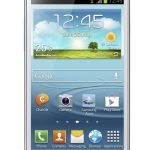
Another day, another Galaxy smartphone. On Tuesday, Samsung unveiled a new handset as part of the company's ever expanding Galaxy lineup, this one dubbed the Galaxy Express.
The new device slots in-between the Galaxy S III Mini and the Galaxy S III, with similar design characteristics including the traditional rounded corners. Samsung could have named the new device the Galaxy S III Average, as the handset features a 4.5-inch Super AMOLED Plus display with a resolution of 800 by 480 and a 1.2GHz dual-core processor, both of which are in-between the specs of the two S-branded smartphones.
NTT DOCOMO spills the beans on the LG Optimus G Pro
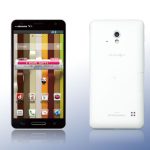
On Tuesday, Japanese carrier NTT DOCOMO took the wraps off its new smartphone and tablet lineup, arriving in the Spring. From the significant number of new devices that will be launched starting from January 25, one stands out from the rest -- the new LG Optimus G Pro smartphone.
NTT DOCOMO's decision to unveil the Optimus G Pro shows unfortunate timing, seeing as on the same day LG revealed plans to introduce its current flagship handset, the Optimus G, into more than 50 new markets, starting with Singapore at the end of January.
Sony Xperia Tablet Z says 'Hello' from Japan
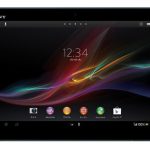
Following the new smartphone flagships introduced at CES 2013, the Xperia Z and Xperia ZL, Japanese Android device manufacturer Sony has unveiled the successor to its Xperia Tablet S slate. Dubbed the Xperia Tablet Z, it sports a dust-proof and water-proof shell, and a lightweight and thin form factor.
The Xperia Tablet Z comes with a 10.1-inch display with a 1920 by 1200 resolution (known as WUXGA), backed by Sony's Mobile BRAVIA Engine 2 technology. The panel features a 16:10 aspect ratio, an interesting choice seeing as how Sony's own recent smartphones feature the narrower 16:9 aspect ratio for each of their respective screens.
Samsung announces the Galaxy S II Plus, a revival of the older star

Far away from events unfolding at CES in Las Vegas, South Korean Android device manufacturer Samsung has unveiled a new device in its Galaxy smartphone lineup. Dubbed the Galaxy S II Plus, the new handset borrows familiar cues from the popular Galaxy S II, but with an added Android 4.1.2 Jelly Bean twist.
Samsung has decided to play it safe with the Galaxy S II Plus, as the new smartphone bears an uncanny resemblance to its sibling from 2011. The only apparent physical differences lie with the color choices. The Galaxy S II is available in black, pink and white, while the Galaxy S II Plus only comes in blue and white, embracing Samsung's Galaxy S III color palette. But what about the specs?
5 CES 2013 pre-show announcements you should know about
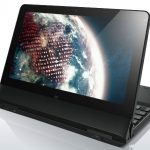
The Computer Electronics Show gathers a significant number of companies and prospective buyers alike in Las Vegas for four days starting Tuesday. However, many companies didn't wait for opening day. Which among the early birds stand out from the others?
From the plethora of pre-show announcements most are oriented towards general consumer appliances. For instance, LG's presentation emphasized 39 new driers and 72 new fridges, among super expensive OLED TVs. For a passionate technology enthusiast like myself CES is not Heaven, it's utter Hell. Still, within the literally hundreds of announcements there are some exciting products unveiled in all the pre-show madness.
USA's first pay-by-app commuter trains launch in Massachusetts

Monday, the Massachusetts Bay Transportation Authority (MBTA) launched what it claims is the first smartphone-based ticketing system for commuter rail in the United States. Riders of four different MBTA commuter lines can buy tickets in the MBTA mTicket app for Android and iOS, and ticket collectors aboard the trains can scan the barcode displayed on the user's screen.
MBTA's claims of being the first in the USA with this technology are a bit overstated. In July, Amtrak launched eTicketing on all of its train lines, which allows users to purchase tickets and have their phone scanned to check in. The difference here is that MBTA's is app-based and includes ticket sales inside the app, which Amtrak doesn't have. Other regional transit systems are testing such things as pay-by NFC, but these are currently only small deployments.
Use your Android phone to cheat the transit authority

Say, do you remember those phone hacks of the 1970s -- free calls using a whistle inside Capt'n Crunch cereal boxes? Or perhaps you recall the 1980's version, depicted in movie WarGames with a soda can pull top? Supposedly you can relive the underground hacking days, quite literally, using an Android app to get free subway rides.
My boss spotted a ZDNET story about this little, ah, gimmick from the Intrepidus Group. Due to a Near Field Communication-chip flaw, would-be digital turnstile jumpers can reset some transit cards to their original state using an Android app. That's another 10 free rides for you, bud.
Cash Killers: PayPal coming to over 7 million US stores next year

Wednesday, eBay's online payment subsidiary PayPal announced it had partnered with credit company Discover to bring PayPal payments to an estimated seven million merchant locations across the United States. Beginning in the second quarter of 2013, consumers will be able to make payments with their PayPal accounts at the registers of these merchants.
Merchants looking to accept PayPal payments will have to upgrade their point of sale hardware or software, and PayPal's digital wallet technologies will be accepted. eBay on Wednesday did not go into significant detail about the mechanics of how payments will be administered, but it falls in line with the company's previous announcements about PayPal moving offline and Discover simultaneously improving its online presence.
Square forges major mobile payment partnership with Starbucks
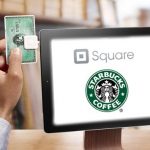
Starbucks Coffee Company and mobile payments startup Square on Wednesday announced a broad interconnected partnership which includes Starbucks investing $25 million in Square as part of the startup’s Series D financing round, Starbucks chairman, president and CEO Howard Schultz joining Square’s Board of Directors, and Square's mobile payments and credit transaction platform being used in U.S. Starbucks stores.
Starbucks customers will be able to use Square's "Pay with Square" mobile app, available on both Android and iPhone, at U.S. Starbucks stores later this fall, and find nearby Starbucks locations within Square Directory. Square will also take on the processing of Starbucks U.S. credit and debit card transactions.
Google Wallet finally gets real, expands to all major U.S. credit providers
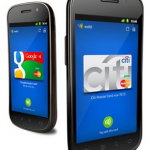
Google on Wednesday afternoon made a huge announcement for its near field communications (NFC)-powered Google Wallet platform. Beginning August first, with an update to the Google Wallet app, Android phone users with supported NFC devices such as the Samsung Galaxy Nexus, HTC One X, or Fujistu Arrows, will be able to use any credit card from Visa, MasterCard, American Express, or Discover as an NFC payment solution. These credit cards can be used at one of the 200,000 MasterCard PayPass-supported retail locations across the United States.
Not only does the update support the full assortment of major U.S. credit card companies, but it also moves the encrypted secure bit for credit card authentication off the phone, and into the cloud on Google's servers. Previously, the wallet ID (virtual card number) was stored in a secure encrypted storage area of the Android phone. This could corrupt the wallet on the phone if software updates were performed, or firmware was updated without clearing the wallet data first. But now with the new permissions being passed down from the cloud, there is an added level of security. That new level of security is the ability to remotely disable your mobile wallet app if your phone is stolen.
Mobile payments are coming to Europe
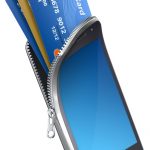
Credit and debit cards haven’t evolved much since their introduction. The principle behind any payment card is the same now as it was 50 years ago. You pay with a plastic card, which is the opposite of technology evolution. It’s something that’s a given in our lives: we can’t live without one. But can we?
The residents of the old Continent, Europe, are still reluctant to let go of cash, as 57 percent of all purchases are still paid the old fashioned way. Credit cards can’t change that, and it looks like nothing can that’s already on the market. The solution to this problem? An entirely new technology, near field communications.
Google Offers combines with Google Wallet in new SingleTap experience
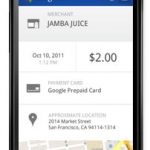
Google and some of its retail partners have rolled out an updated experience to the four-week old Google Wallet payment-by-phone system that now includes coupons and rewards points, which can all be redeemed with a single tap of the user's NFC-enabled smartphone. Google is calling the updated experience "SingleTap."
In this updated experience, Google Offers has been incorporated into the wireless payment system. In the "Offers" tab in the Google Wallet app, there are deals exclusive to users of the wireless payment service, and whenever a user scans his Google Wallet wireless device, these deals are automatically activated whether or not he's actually checked them out in the tab.
Google Wallet pay-by-phone system makes early appearance
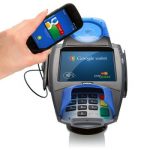
Google Wallet, the mobile payment system that takes advantage of Android's Near Field Communications (NFC) capabilities, launched on Monday.
Google first announced the service last May, and the search company showed how users could enter their credit card information into the Google Wallet app, and then tap their phone on an NFC reader to make payments. Citi, MasterCard, First Data and Sprint were the first financial and carrier partners to go along with the service, and approximately 15 retail partners announced their support for the "single tap" payment program as well.
No more waiting for annoying cell phone salesmen to configure your new gear while they try to sell you accessories
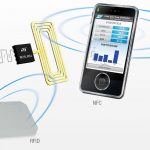
While the short-range wireless technology known generically as Near-field communications (NFC) is still in its early stages of consumer adoption, the technology is already in its seventh year of development and it is maturing beyond the point where it can be used simply for exchanging small bits of information or payment authorization. Imagine if companies could make a single production run of smartphones, tablets, or notebooks without having to regionalize the software on it, and that was done the moment the machine was purchased.
Switzerland-based semiconductor company STMicroelectronics on Tuesday launched a new dual-interface EEPROM memory unit (M24LR64) that is specifically designed to make a system's data available via NFC at all times. EEPROM is a non-volatile form of memory commonly used in microcontrollers in industrial machinery, and can often be found in digital sensors and timers.
Recent Headlines
Most Commented Stories
BetaNews, your source for breaking tech news, reviews, and in-depth reporting since 1998.
Regional iGaming Content
© 1998-2025 BetaNews, Inc. All Rights Reserved. About Us - Privacy Policy - Cookie Policy - Sitemap.